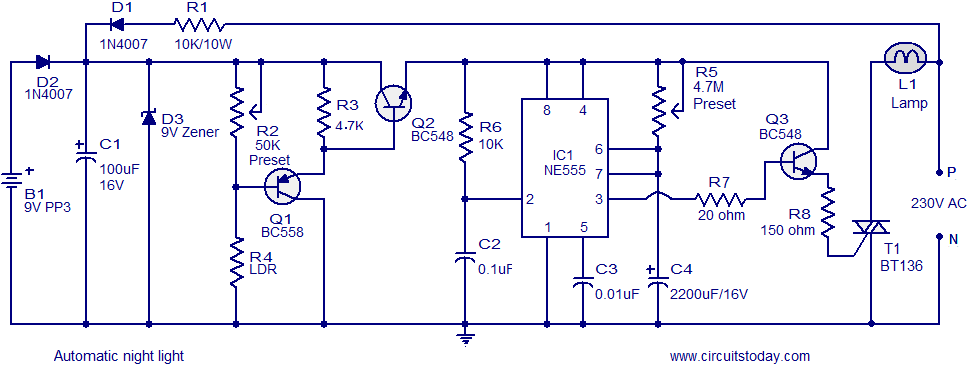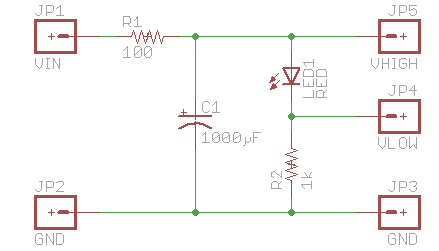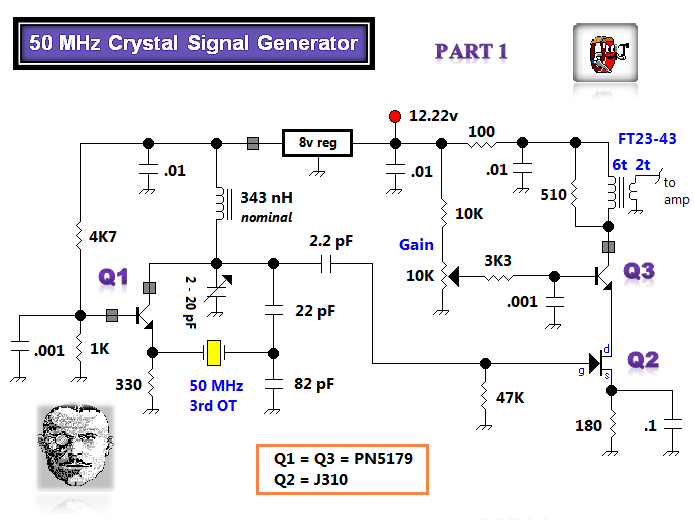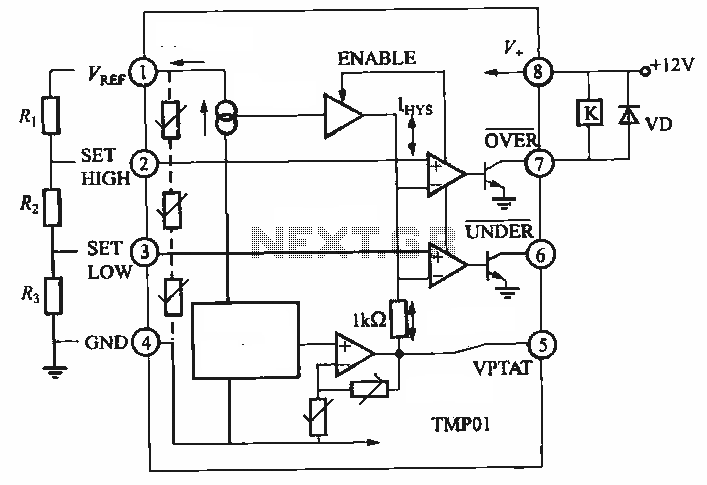
27MHz quartz crystal oscillator circuit
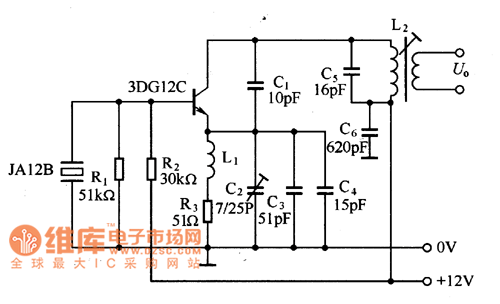
The 27MHz quartz crystal oscillator circuit is illustrated in figure 1. The biasing circuit consists of resistors R1, R2, and R3, while C6 serves as the bypass capacitor. The partial voltage circuit includes capacitors C1, C2, C3, and C4 to regulate the oscillation strength. L1 functions as a high-frequency choke coil, providing filtering capabilities.
The 27MHz quartz crystal oscillator circuit is designed to generate a stable frequency output, utilizing a quartz crystal as its frequency-determining element. The circuit's biasing network, composed of resistors R1, R2, and R3, is essential for establishing the correct operating point of the active device, typically a transistor or operational amplifier. This configuration ensures that the oscillator operates within its linear region, allowing for consistent oscillation.
Capacitor C6 acts as a bypass capacitor, which helps to filter out high-frequency noise from the power supply, ensuring that the oscillator operates with minimal interference. The partial voltage circuit, comprising capacitors C1, C2, C3, and C4, is crucial for controlling the feedback within the oscillator. These capacitors allow for fine-tuning of the oscillation amplitude, which is vital for achieving the desired output signal strength without distortion.
The high-frequency choke coil L1 is integrated into the circuit to provide additional filtering. It prevents unwanted high-frequency signals from affecting the oscillator's performance, thereby improving the overall stability and purity of the generated frequency. The combination of these components facilitates the creation of a reliable 27MHz signal, which can be utilized in various applications, including radio transmission and frequency modulation systems.The 27MHz quartz crystal oscillator circuit is as shown in figure 1. The biasing circuit is composed of the R1, R2 and R3, C6 is the bypass capacitor. The partial voltage circuit is composed of the C1, C2, C3 and C4 to control the strength of oscillation. L1 is the high-frequency choke coil, it has the role of filtering. Figure 1 The 27MHz quartz crystal os.. 🔗 External reference
The 27MHz quartz crystal oscillator circuit is designed to generate a stable frequency output, utilizing a quartz crystal as its frequency-determining element. The circuit's biasing network, composed of resistors R1, R2, and R3, is essential for establishing the correct operating point of the active device, typically a transistor or operational amplifier. This configuration ensures that the oscillator operates within its linear region, allowing for consistent oscillation.
Capacitor C6 acts as a bypass capacitor, which helps to filter out high-frequency noise from the power supply, ensuring that the oscillator operates with minimal interference. The partial voltage circuit, comprising capacitors C1, C2, C3, and C4, is crucial for controlling the feedback within the oscillator. These capacitors allow for fine-tuning of the oscillation amplitude, which is vital for achieving the desired output signal strength without distortion.
The high-frequency choke coil L1 is integrated into the circuit to provide additional filtering. It prevents unwanted high-frequency signals from affecting the oscillator's performance, thereby improving the overall stability and purity of the generated frequency. The combination of these components facilitates the creation of a reliable 27MHz signal, which can be utilized in various applications, including radio transmission and frequency modulation systems.The 27MHz quartz crystal oscillator circuit is as shown in figure 1. The biasing circuit is composed of the R1, R2 and R3, C6 is the bypass capacitor. The partial voltage circuit is composed of the C1, C2, C3 and C4 to control the strength of oscillation. L1 is the high-frequency choke coil, it has the role of filtering. Figure 1 The 27MHz quartz crystal os.. 🔗 External reference
Warning: include(partials/cookie-banner.php): Failed to open stream: Permission denied in /var/www/html/nextgr/view-circuit.php on line 713
Warning: include(): Failed opening 'partials/cookie-banner.php' for inclusion (include_path='.:/usr/share/php') in /var/www/html/nextgr/view-circuit.php on line 713
